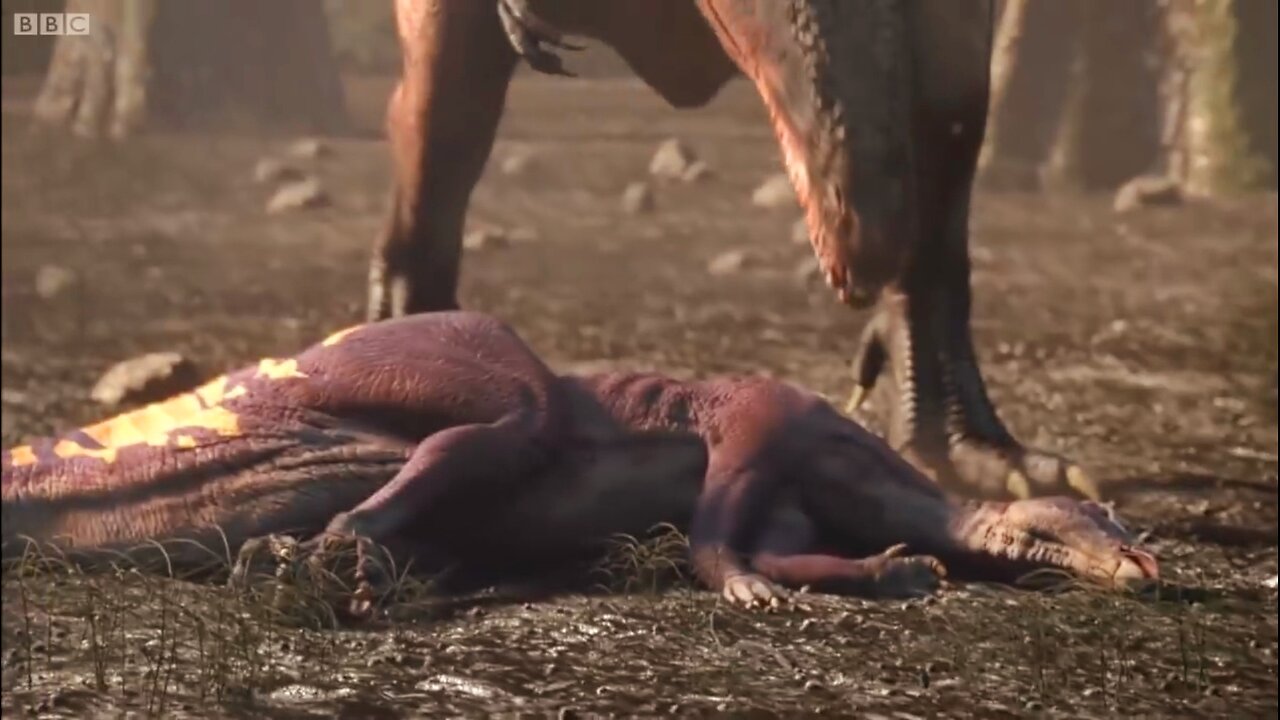Premium Only Content

Ferocious Dinosaur Moments | Top 5 | BBC Earth 🌍🌍
Dinosaur behavior is difficult for paleontologists to study since much of paleontology is dependent solely on the physical remains of ancient life. However, trace fossils and paleopathology can give insight into dinosaur behavior. Interpretations of dinosaur behavior are generally based on the pose of body fossils and their habitat, computer simulations of their biomechanics, and comparisons with modern animals in similar ecological niches. As such, the current understanding of dinosaur behavior relies on speculation, and will likely remain controversial for the foreseeable future. However, there is general agreement that some behaviors which are common in crocodiles and birds, dinosaurs' closest living relatives, were also common among dinosaurs. Gregarious behavior was common in many dinosaur species. Dinosaurs may have congregated in herds for defense, for migratory purposes, or to provide protection for their young. There is evidence that many types of dinosaurs, including various theropods, sauropods, ankylosaurians, ornithopods, and ceratopsians, formed aggregations of immature individuals. Nests and eggs have been found for most major groups of dinosaurs, and it appears likely that dinosaurs communicated with their young, in a manner similar to modern birds and crocodiles. The crests and frills of some dinosaurs, like the marginocephalians, theropods and lambeosaurines, may have been too fragile to be used for active defense, and so they were likely used for sexual or aggressive displays, though little is known about dinosaur mating and territorialism. Most dinosaurs seem to have relied on land-based locomotion. A good understanding of how dinosaurs moved on the ground is key to models of dinosaur behavior; the science of biomechanics, in particular, has provided significant insight in this area. For example, studies of the forces exerted by muscles and gravity on dinosaurs' skeletal structure have investigated how fast dinosaurs could run, whether diplodocids could create sonic booms via whip-like tail snapping, and whether sauropods could float.
#jurassic #dinosaurs #ferocious hunter #prehistoric #wildlife #animals #bbc #bbcearth #natgeo
-
 LIVE
LIVE
OhHiMark1776
3 hours ago🟢07-26-25 ||||| Halo Multiplayer Rumble: No. 16 ||||| Halo MCC (2019)
45 watching -
 LIVE
LIVE
GamerGril
3 hours agoThe E-Gril Within | First Time Play Through | Saturday Spookfest
231 watching -
 18:22
18:22
Liz Wheeler
4 hours agoWhat Ghislaine Maxwell Knows
13K15 -
 LIVE
LIVE
cosmicvandenim
7 hours agoWARZONE - Kenetik Energy Announcement - Discord Spy Bots
134 watching -
 1:05:51
1:05:51
Jeff Ahern
4 hours ago $18.47 earnedThe Saturday Show with Jeff Ahern
101K12 -
 LIVE
LIVE
Misfit Electronic Gaming
2 hours ago $0.11 earned"LIVE" RUMBLE HALO Spartans "Halo MCC" 23 Followers to go till we hit !000 RUMBLE TAKEOVER
13 watching -
 1:57:13
1:57:13
Film Threat
6 hours agoLIVE FROM SAN DIEGO COMIC-CON! (Saturday) | Film Threat Live
15.9K -
 31:40
31:40
Tactical Advisor
4 hours agoEveryone Talks About This AR15 Being The Best? | Vault Room Live Stream 034
62.4K4 -
 1:08:53
1:08:53
Michael Franzese
18 hours agoHollywood Deaths & Political Secrets: A Nation at a Crossroads?
155K101 -
 9:27
9:27
MattMorseTV
1 day ago $16.57 earnedHe just lost EVERYTHING.
66.5K80